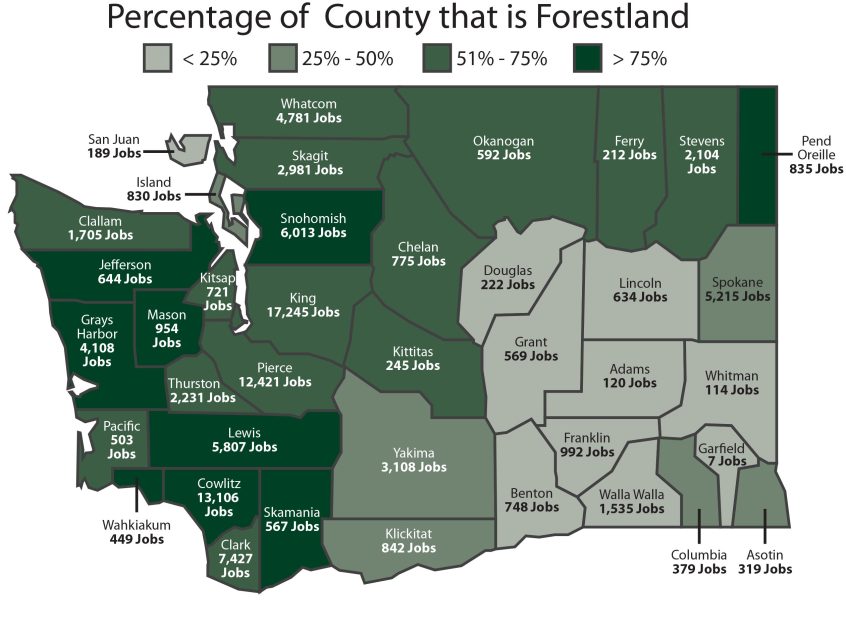
Top: Unthinned forest in Republic, WA
Bottom: Thinned forest, removing dead and dying trees and brush, Republic, WA
The average age of Washington’s forests is 92 years, but our national forests are 126 on average and national parks, 192 years old. Some want to set aside second growth, legacy forests age 70 or greater — but they must not realize that the average age of all forests is 22 years older than that. The average age of state and county forests is 69 and private forests is 53 years. When old trees are not replaced by younger trees, forests continue to age, decay and emit carbon, all the while increasing wildfire risk. Each year, 71% of the growth on national forests is dying, emitting carbon and creating more fuel for hotter fires.

The alternative is to manage our forests. Each year healthy, managed state and private forests absorb twice as much carbon per acre than older, unmanaged federal forests, and lose just 23% of their annual growth to decay and decomposition. These managed forests also transfer 44% of the annual growth to the built environment through carbon stored in harvested wood products. Vigorously growing trees absorb carbon at twice the rate of older, dying forests. We need to bring our forests into balance and support healthy, productive forests across our landscape. While it’s easy to gloss over these details in the push for more 70-year-old set asides, it’s not easy to live in the smoke from unmanaged and unhealthy forests. We owe it to our forests and to ourselves to promote healthy, productive forests. To learn more, go to: https://healthyproductiveforestswashington.com
